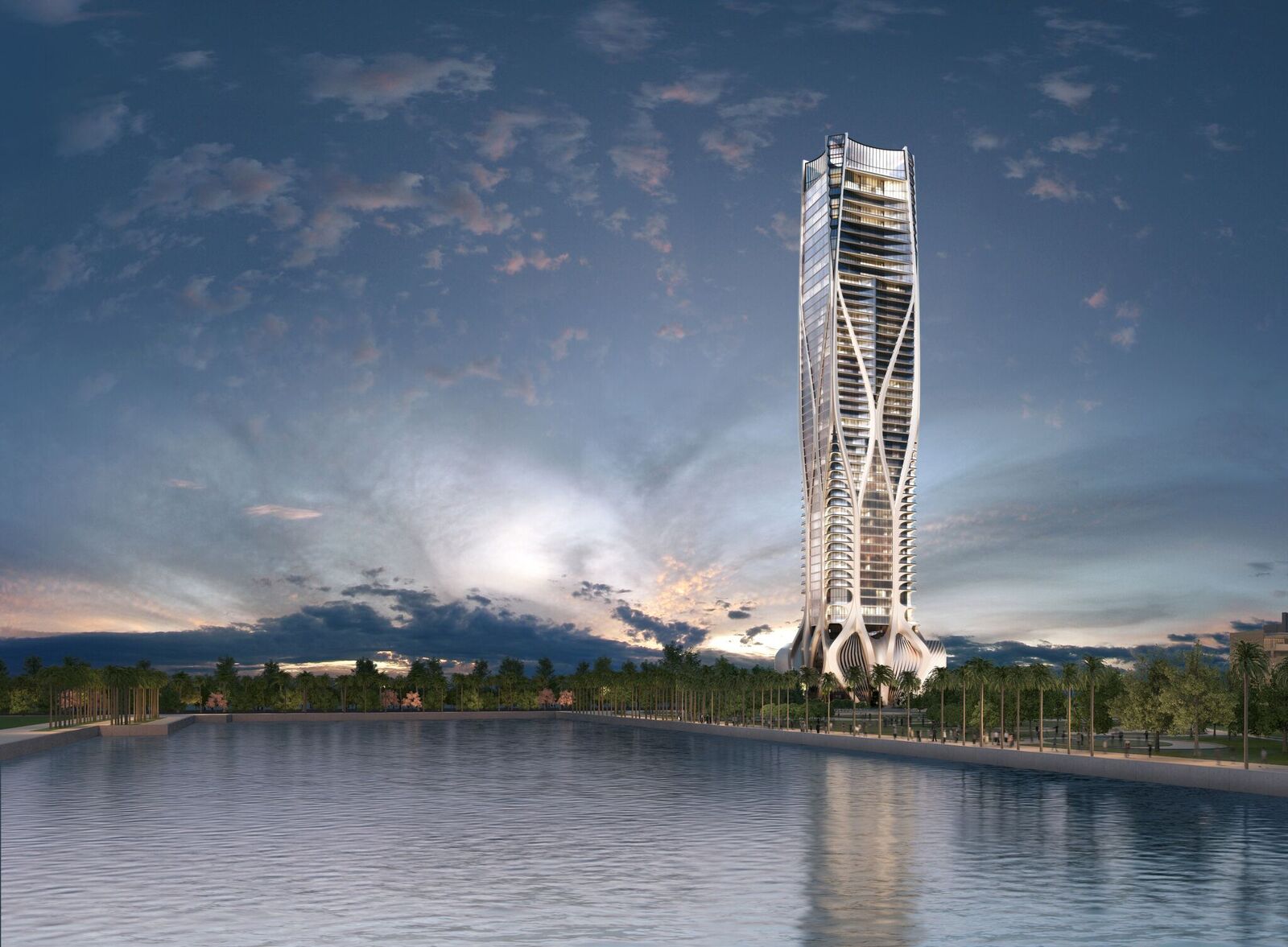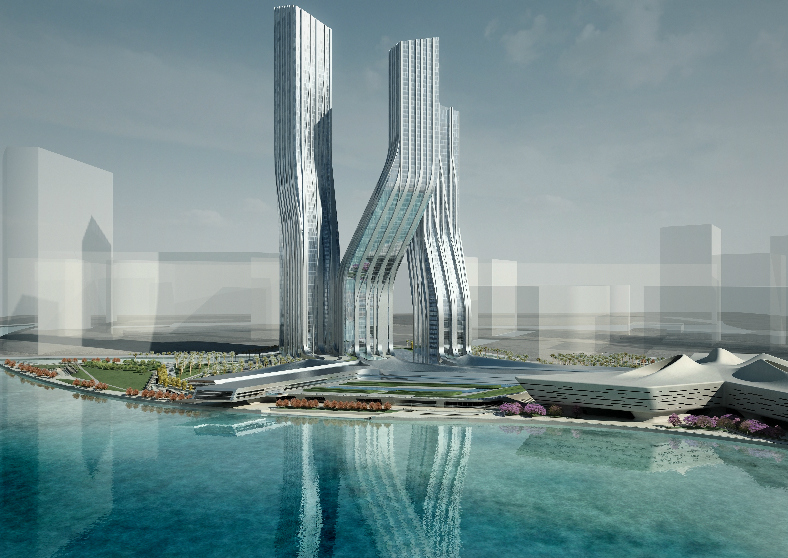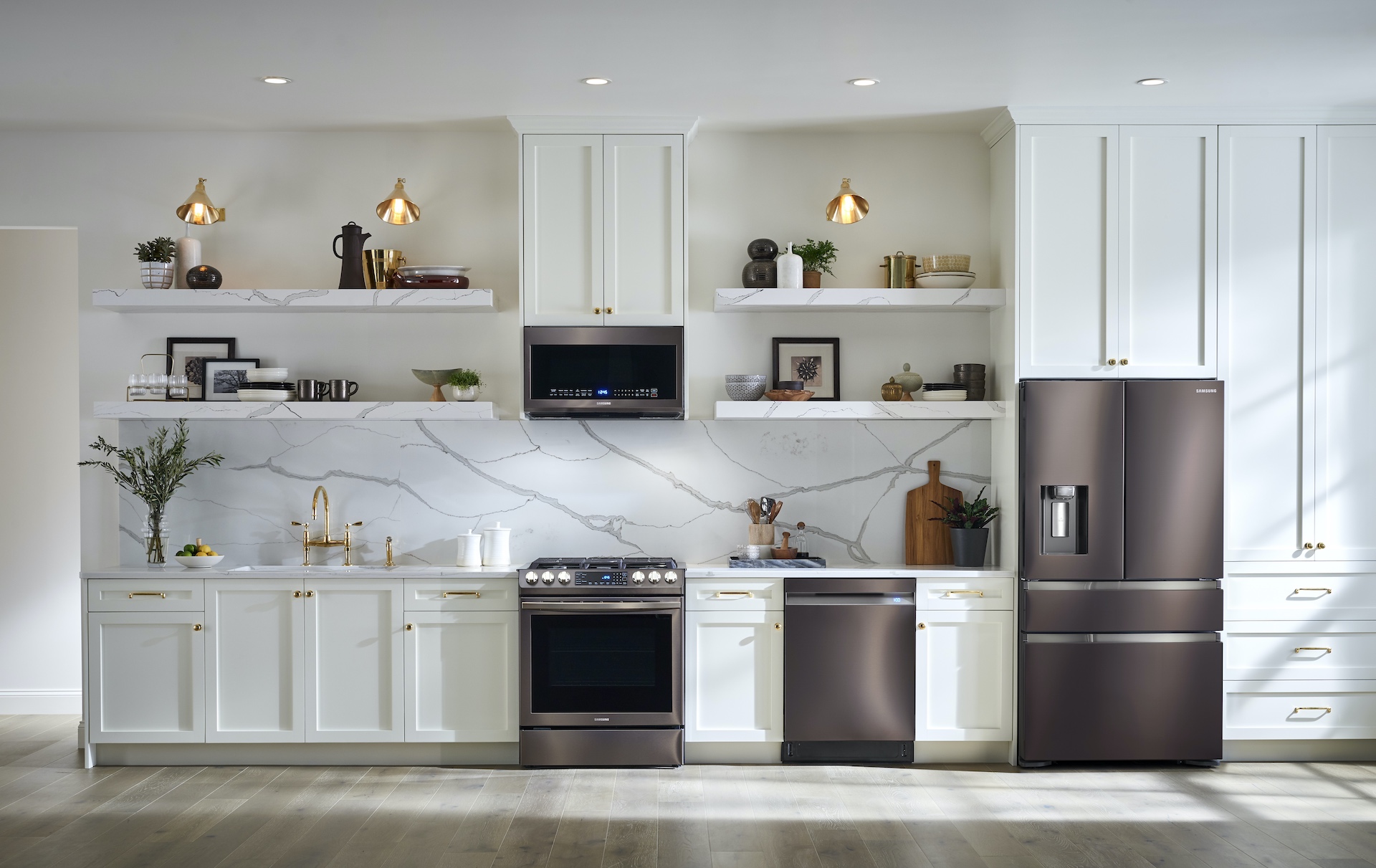Chris Lépine has a penchant for a type of architecture that seemingly subverts its own tenets to create commanding edifices. Rendering designs that are assertively modern yet surprisingly futuristic, his craft is elevated with One Thousand Museum, Zaha Hadid Architects’ inaugural residential high-rise in the Western Hemisphere.
“Working here, working with Zaha when she was still with us, it becomes a bit of a mindset, or a way of thinking, or an attitude toward design that we all share,” says Lépine. Over a decade ago, he walked into the former school that housed the award-winning London studio of the late architect as the new associate director––one of only a handful of the nearly 150 professionals at her world-renowned architecture firm, Zaha Hadid Architects.
Since then, Zaha Hadid Architects has shifted headquarters, completed a multitude of projects across the world, embarked on others, hung in inertia on suspended designs, and reaped a bevy of accolades. During that time, ascending to the senior management team within the office, Lépine has left his own mark on the company’s progressive architectural mores as much as he has absorbed Hadid’s revolutionary desire for experimentation.
“She [was] an incredible character,” Lépine says. “She always pushed the design. It was really a joy to be able to be here in this office, while she was still here and to work with her, to hear how she commented on designs… everyone who works here has a passion for testing design possibilities, and that’s something that she always stressed, or always wanted to encourage. She was constantly looking for fresh ways to investigate and look at a design problem; to keep architecture alive, really, to keep it invigorated.”
Having helmed several grand projects across the globe, from New York to Chengdu, China, Lépine is eager to grasp and parse the intricacies of a building, as it slowly emerges, first, in his mind, then on computers and, eventually, on the ground.
“I like to fully understand a design opportunity,” he explains, “to question what are the givens, what are the variables, before launching into a preconceived idea̅––to let an understanding of the problem naturally guide the solution, so that the solution is never forced̅, and then take a step back and evaluate what’s available so that a well-interrogated design emerges––one with strength and merit that can go the distance.”
Lépine’s rigorous approach to architecture, as well as to its travails and promises, has cobbled a flourishing career that did not always seem destined. He grew up in Rock Hill, a former textile hub dubbed “the gateway to South Carolina.” On the cusp of adulthood, he moved an hour south to Columbia, the state’s capital, to attend the University of South Carolina. Excelling in his studies, Lépine graduated with a degree in finance. But then, he switched fields and obtained a master of architecture at Clemson University in 1999.
At the dawn of the new century, Lépine crossed the pond and settled in London, in its exhilarating amalgam of architectural styles that straddle eons and influences. He spent six years as associate at the tech-savvy architecture firm Foster + Partners. Here, he pursued research and development, and mastered advanced digital technology. It helped him to not only overcome daunting design hurdles but also to appreciate “the relationships between geometry and physical materials: how a design is documented, how a design is communicated, and how complex pieces are then fabricated,” he says.
This deep understanding of the tangled connections between architecture and design, as well as space and life––as robust as the foundations on which Lépine’s creations grow––shapes his lectures at the Architectural Association in London, where Hadid studied and later also taught. It also infuses his leadership as project director for One Thousand Museum.
“[This] background helped guide early decisions on One Thousand Museum,” Lépine says. “For example: the geometric set-out, the refinements to the building form, looking for opportunities, where we could control complexity but also opportunities to simplify, while retaining the overall dynamic of the design.”
A 62-story, 83-unit luxurious condominium tower on the prestigious Biscayne Boulevard in Miami, One Thousand Museum is a pinnacle of talent and tenacity, a success of professional and personal significance. It is one of the few skyscraper residences conceived by Zaha Hadid, whose formidable, horizontally inclined designs of public buildings earned her the Pritzker Prize. It is also one of her last concepts before she died early last year in Miami.
“Her passing was a tragic loss,” Lépine says, “but we are consoled by the fact that her tower is getting built, and it’s getting built very much in line with the original vision. We’re all dedicated to seeing the project through––including the client––and remaining faithful to the design.”
Since its early inception, the blueprint for One Thousand Museum hasn’t changed much. Rather, it has continuously evolved to reach a crest of refinement that reflects Zaha Hadid Architects’ proclivity to work within and yet improve on the innate possibilities that projects offer.
As a result, the design is striking––a rare masterpiece of exoskeleton construction that breaks the glistening Miami cityscape. Bearing the weight of the concrete building, the steel-and-glass exterior sensually curves toward the clouds, appearing slender and sturdy at the same time.
“We always intended for the exoskeleton, the main expression of the building, to have a strong presence, both inside and out,” Lépine says. “So this sculpted piece of architecture, or structure, which is the primary building expression, gives unique character to each unit. Although we didn’t design the units themselves, there’s very much the presence of our design in each unit.”
Over half of the boutique lofts are reportedly already presold for hundreds of millions of dollars. One Thousand Museum, which began its skyward race in 2014, is the first residential project Lépine is reassuringly raising to fruition––a feat in an industry wrought with unmaterialized testaments of architectural mastery. The completion date is slated for late 2018.
“It’s exciting,” Lépine said on seeing One Thousand Museum soar to life, “especially since I’ve come such a long way on a lot of other projects just to see them stall out or be put on hold. And I guess that’s the nature of architecture, especially working at a firm like Zaha Hadid Architects, where every project is special, but because of that, there is that element of risk, and quite often projects get put on hold, they get stopped. So, when you do see one break ground and start to go up a few floors, it is a good feeling.”
Lépine’s very first venture at Zaha Hadid Architects––Dubai’s Signature Towers that were to incorporate an office, hotel, and residential super-high-rises––still languishes under the emirate’s strained market. Another project, much closer to One Thousand Museum, also grinded to a halt before it could take off. Only five miles away from the condominium tower, across Biscayne Bay, is the intended site of Collins Park Place. Lépine worked on the airy public garage and plaza Hadid envisioned in Miami Beach for five years, paring down the initial plans, whose cost nearly doubled the city’s $27 million budget. In 2016, less than a month after Hadid’s death, however, City Hall shelved the project, displeased with the reduced space Zaha Hadid Architects proposed to remain within the financial boundary.
Despite the dead ends that branch off the steep ascend to architectural acclaim, Lépine hones on the constructions that are steadily taking shape––like One Thousand Museum, Egypt’s office and retail Stone Towers, and the New Century City Art Centre, the largest cultural building in China. All three structures––explorations of individuality, clarity, and functionality––carry Hadid’s legacy and Lépine’s vision. Spun over their joint projects, the artistic parallels between Hadid and Lépine appear to converge. As evidenced in he designs, for Lépine, much like for Hadid, architecture is an expression of contemporary urbanity, an extension of life and an expansion of a postmodern landscape.
Images courtesy of Zaha Hadid Architects
This story is featured in the Summer/Fall 2017 issue of Haute Residence magazine.








